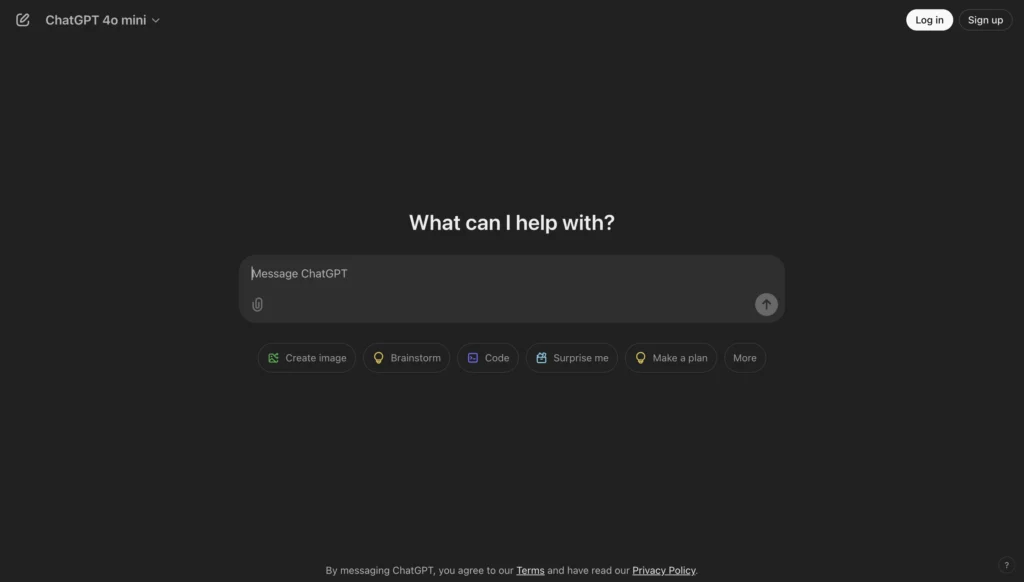Content Marketing: A Strong Organic Traffic on New Happy Websites

Introduction
Content marketing has emerged as a powerful tool for businesses to attract and engage their target audience, ultimately driving organic traffic to their websites. In this article, we will delve into the importance of content marketing and the shift towards organic traffic. We will then provide a detailed guide on building an effective content strategy, creating engaging and shareable content, leveraging influencer marketing, implementing content distribution and promotion strategies, optimizing content performance, and staying updated with industry trends.
I. Building an Effective Content Strategy
A. Identifying Target Audience and Goals
To succeed in content marketing, it is crucial to identify your target audience and understand their needs and interests. By gaining insights into their demographics, behavior patterns, and preferences, you can tailor your content to resonate with them. Additionally, establish clear goals for your content marketing efforts, such as increasing brand awareness, driving website traffic, or generating leads.
B. Conducting Keyword Research for Optimal Visibility
Keyword research plays a pivotal role in boosting the visibility of your content. Use tools like Google Keyword Planner or SEMrush to identify relevant keywords that have high search volume and low competition. Incorporate these keywords strategically into your content to improve its search engine rankings and attract organic traffic.
C. Crafting Compelling and Valuable Content
Creating content that is both compelling and valuable is essential for driving organic traffic. Aim to provide useful information, insights, or solutions to your target audience’s pain points. Incorporating storytelling techniques and personal anecdotes can add a touch of authenticity and make your content more engaging.
D. Leveraging Different Content Formats
Diversifying your content formats can help you cater to different preferences and reach a wider audience. Consider creating blog articles, infographics, videos, podcasts, or interactive quizzes to present your content in various forms. This approach not only keeps your audience engaged but also increases the chances of your content being shared across different platforms.
E. Optimizing Content for SEO
Effective search engine optimization (SEO) techniques are crucial for driving organic traffic to your website. Ensure that your content is structured properly with relevant headings, subheadings, and meta tags. Additionally, optimize your content for mobile devices, as more and more users are accessing the internet via smartphones and tablets.
II. Creating Engaging and Shareable Content
A. Telling Captivating Stories
Humans are inherently drawn to stories, and incorporating storytelling techniques into your content can help captivate your audience. Craft narratives that evoke emotions, share personal experiences, or provide real-life examples. By doing so, you can create a connection with your readers and encourage them to share your content with others.
B. Incorporating Visual Elements for Enhanced Engagement
Visual content is highly effective in attracting and engaging audiences. Include eye-catching images, informative infographics, or engaging videos in your content to break up text and make it more visually appealing. Visual elements not only enhance the overall user experience but also make your content more shareable on social media platforms.
C. Utilizing Social Media to Amplify Content Reach
Social media platforms provide an excellent opportunity to amplify the reach of your content. Share your articles, videos, or infographics on platforms like Facebook, Twitter, LinkedIn, and Instagram. Encourage your audience to like, comment, and share your content, allowing it to reach a wider network of potential readers.
D. Encouraging User-generated Content
User-generated content can be a valuable asset in content marketing. Encourage your audience to share their opinions, experiences, or creative interpretations of your content. This not only fosters engagement and loyalty but also expands your content reach through word-of-mouth recommendations.
E. Implementing Call-to-Actions to Drive Traffic
Include strategic call-to-actions (CTAs) in your content to guide your readers towards taking the desired action, such as subscribing to your newsletter, downloading an ebook, or purchasing a product. Place these CTAs strategically within your content to maximize their visibility and drive organic traffic to relevant pages on your website.
III. Leveraging Influencer Marketing
A. Collaborating with Relevant Influencers
Influencer marketing can greatly enhance the reach and credibility of your content. Identify relevant influencers in your industry who have a strong online presence and a significant number of followers. Reach out to them with personalized messages, expressing your interest in collaborating on content promotion.
B. Developing Authentic Partnerships
When collaborating with influencers, it is crucial to foster authentic partnerships. Ensure that the influencers align with your brand values and have a genuine interest in your content. This authenticity will resonate with their followers and facilitate organic traffic generation.
C. Harnessing Influencer Reach to Expand Audience
Influencers have established audiences that trust their recommendations. By leveraging their reach, you can tap into new audiences and drive organic traffic to your website. Encourage influencers to share your content through guest blog posts, social media shoutouts, or collaborations on podcasts or webinars.
D. Measuring Influencer Marketing ROI
To measure the success of your influencer marketing efforts, track key performance indicators such as website traffic, engagement metrics, and conversion rates. Use tools like Google Analytics or social media analytics platforms to gain insights into the impact of influencer collaborations on your content performance.
E. Nurturing Long-Term Relationships
Building long-term relationships with influencers can yield ongoing benefits for your content marketing strategy. Continuously engage with influencers through social media interactions, comments on their posts, and providing them with exclusive access to your latest content. This fosters loyalty and lays the foundation for future collaborations.
IV. Content Distribution and Promotion Strategies
A. Utilizing Email Marketing to Drive Traffic
Email marketing remains a powerful tool for distributing and promoting your content. Build an email list of subscribers who have expressed interest in your content. Send regular newsletters featuring your latest articles, videos, or downloadable resources, driving traffic directly to your website.
B. Leveraging Guest Blogging Opportunities
Take advantage of guest blogging opportunities on reputable websites and blogs in your industry. This allows you to tap into their established audience and drive organic traffic to your website through valuable backlinks. Craft high-quality guest posts that provide unique insights or actionable tips related to your expertise.
C. Engaging with Online Communities and Forums
Participating in online communities and forums relevant to your industry can help you establish yourself as a thought leader and drive organic traffic to your website. Share your expertise by answering questions, providing valuable insights, and linking back to relevant content on your website.
D. Expanding Reach through Podcasts and Webinars
Podcasts and webinars offer a platform to showcase your knowledge and reach new audiences. Collaborate with industry experts or influencers to host informative and engaging podcasts or webinars. Promote these events on your website, social media platforms, and through email marketing to drive traffic to your website.
E. Harnessing the Power of Social Media Platforms
Social media platforms like Facebook, Twitter, Instagram, and LinkedIn are invaluable for content distribution and promotion. Regularly share your content on these platforms, engage with your audience, and use hashtags and relevant keywords to increase visibility. Encourage social sharing and maximize the potential of viral content.
V. Monitoring, Analyzing, and Optimizing Content Performance
A. Tracking Website Analytics and Key Metrics
Monitoring key metrics and website analytics is essential to understanding the performance of your content. Use tools like Google Analytics or other analytics platforms to track metrics like website traffic, bounce rates, time on site, and conversion rates. Regularly analyze this data to identify trends, opportunities, and areas for improvement.
B. Conducting A/B Testing for Continuous Improvement
A/B testing allows you to compare different versions of your content to determine what resonates best with your audience. Test different headlines, formats, or visuals and analyze the performance metrics to identify the most effective elements. Use these insights to optimize your content and drive organic traffic.
C. Implementing SEO Audits and Updates
Regular SEO audits are crucial for maintaining the visibility and performance of your content. Conduct thorough audits to identify any technical issues, broken links, or outdated content. Keep up with SEO best practices and make necessary updates to ensure your content remains optimized for search engines.
D. Engaging in Regular Content Audits
Content audits help you evaluate the quality, relevance, and performance of your existing content. Assess whether your content aligns with your target audience and business goals. Identify gaps or areas that need improvement and make updates or create new content accordingly to drive organic traffic.
E. Staying Updated with Industry Trends and Best Practices
The landscape of content marketing is ever-evolving, and staying updated with industry trends and best practices is crucial for success. Follow industry blogs, attend webinars, and participate in relevant conferences to gain insights and ideas for creating effective content. Embrace new technologies, platforms, and strategies that can drive organic traffic to your website.
VI. Summary
In summary, content marketing is a powerful tool for driving organic traffic to your website. By building an effective content strategy, creating engaging and shareable content, leveraging influencer marketing, implementing content distribution and promotion strategies, monitoring content performance, and staying updated with industry trends, you can maximize the impact of content marketing on your website’s success.
VII. Frequently Asked Questions (FAQs)
A. What is content marketing and how does it drive organic traffic?
Content marketing is a strategic approach to creating and distributing valuable and relevant content to attract and engage a target audience. By providing useful information, establishing credibility, and addressing audience needs, content marketing drives organic traffic by improving search engine rankings, encouraging social sharing, and fostering word-of-mouth recommendations.
B. How can I measure the success of my content marketing efforts?
To measure the success of your content marketing efforts, track key performance indicators such as website traffic, engagement metrics (likes, shares, comments), conversion rates, and search engine rankings. Use analytics tools to gain insights into the impact of your content on your target audience and make data-driven decisions for improvement.
C. What are some effective content formats for driving organic traffic?
Different content formats appeal to different audiences and can help drive organic traffic. Blog articles, infographics, videos, podcasts, and interactive quizzes are effective formats for presenting valuable content to your target audience. Diversifying your content formats can also increase the chances of your content being shared and reaching a wider audience.
D. How do I identify and collaborate with influencers for content promotion?
Identifying relevant influencers in your industry requires research and understanding of your target audience. Look for influencers who have a strong online presence, align with your brand values, and have a significant number of followers. Reach out to them with personalized messages, expressing your interest in collaborating on content promotion.
E. What are some key tactics for optimizing content performance?
Optimizing content performance involves tracking website analytics, conducting A/B testing to refine content elements, implementing SEO best practices, engaging in regular content audits, and staying updated with industry trends. By continuously analyzing data, making necessary updates, and adopting effective strategies, you can optimize content performance and drive organic traffic.




